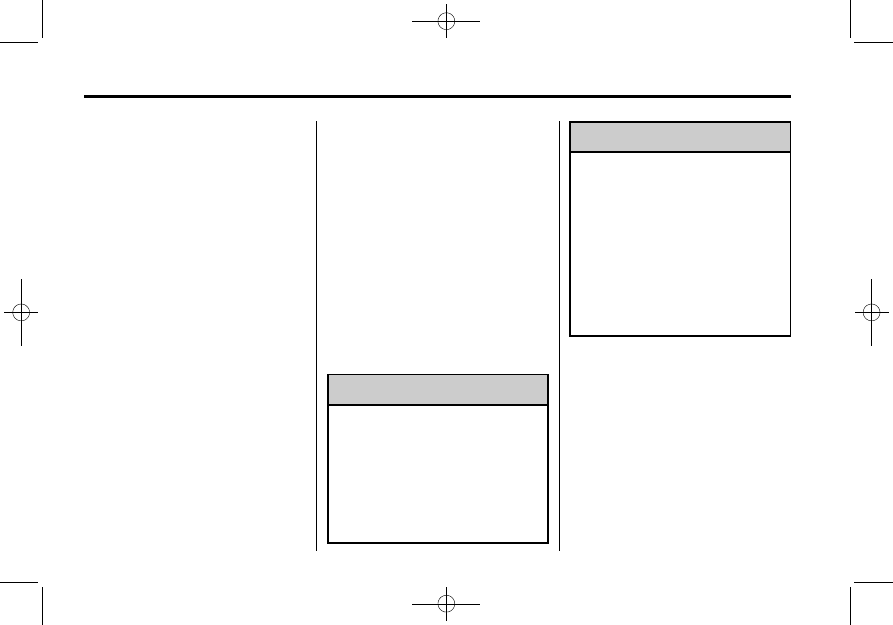
Black plate (4,1)
Express/Savana CNG Compressed Natural Gas Supplement (GMNA-Localiz-
ing-U.S./Canada-7707479) - 2015 - crc - 7/9/14
9-4
Driving and Operating
Always observe all safety
recommendations and operating
instructions on the refueling
equipment. When refueling, use a
fuel fill nozzle that complies with
ANSI/CSA-NGV 1-2006 standards.
Nozzles are designed according to
their maximum fill pressure: P30
(blue handle) for 20 684 kPa
(3,000 psi) and P36 (yellow handle)
for 24 800 kPa (3,600 psi).
A fuel nozzle less than 7.6 cm (3 in)
long may be difficult to disengage
after dispensing CNG.
During fueling, CNG needs to be
delivered to the vehicle at the
appropriate pressure in relationship
to the ambient temperature. This
can be done automatically by a
temperature compensation system
on the CNG fuel dispenser or
manually by stopping the CNG fill at
a recommended pressure. GM
recommends that customers use
CNG fueling stations that have a
temperature compensation system
whenever possible. Check with the
fuel station. If one is not available,
see the temperature compensation
chart that follows in this section to
choose the appropriate fill pressure
for the ambient temperature. In
addition, fill only to the pressure
level for the lowest ambient
temperature anticipated during
fueling.
Leaving a vehicle connected to a
slow fill station can cause the tank
to be filled to a higher pressure than
recommended, especially when
outside temperatures fluctuate.
Disconnect the vehicle from the fill
station as soon as it is full, unless
an auto shutoff feature is used.
{
Warning
If CNG tanks are filled to a higher
pressure than recommended and
then exposed to a much higher
ambient temperature
environment, expansion of the
gas caused by the temperature
change may cause pressure relief
(Continued)
Warning (Continued)
devices on the vehicle CNG
tank(s) to release gas, as
designed. If an ignition source is
present, this could create a risk of
fire or explosion. If there is any
possibility that the tank has been
over pressurized, take steps to
relieve the excess pressure, such
as by driving or running the
vehicle in an open area to remove
some fuel.
Make sure that your CNG vehicle is
properly maintained and repaired to
avoid elevated temperatures
surrounding the tank, since elevated
temperatures in the area of the tank
could also raise the CNG pressure
in the tank.
Consult materials available from
NGVAmerica - http://www.ngvc.org
and the Clean Vehicle
Education Foundation -















































